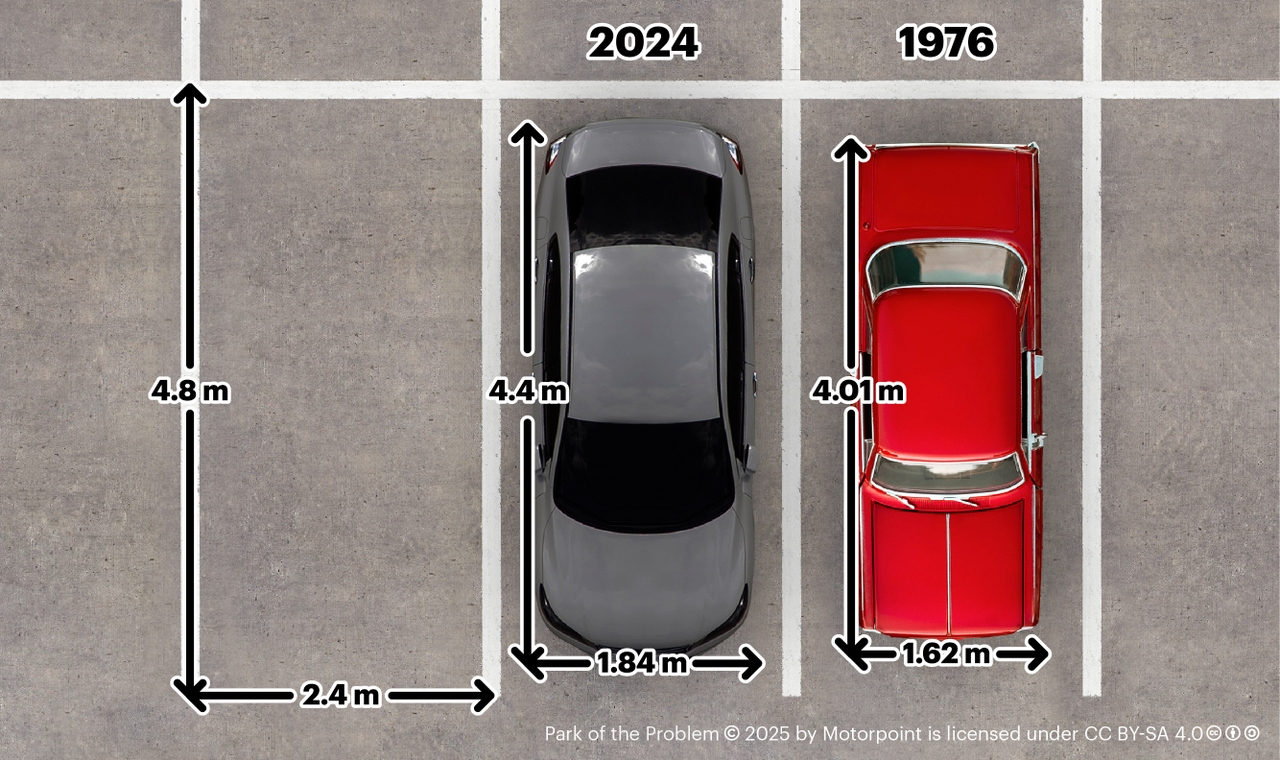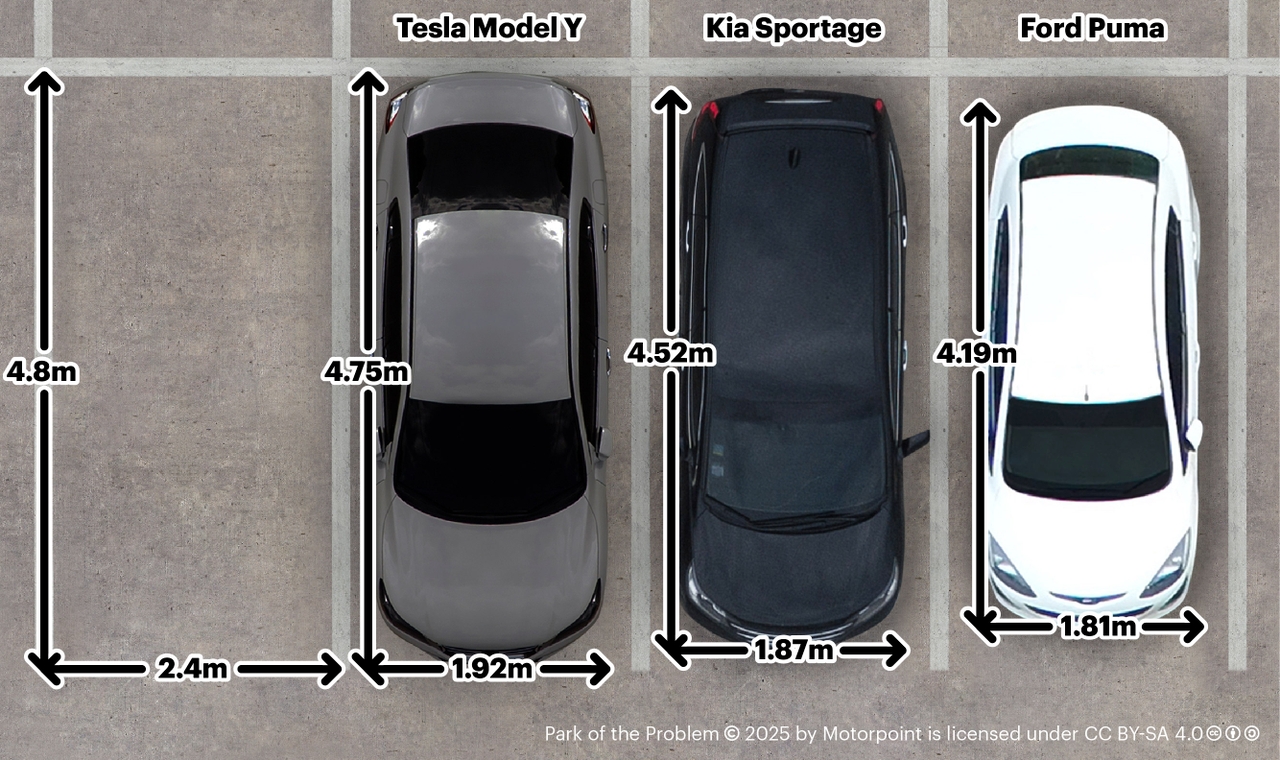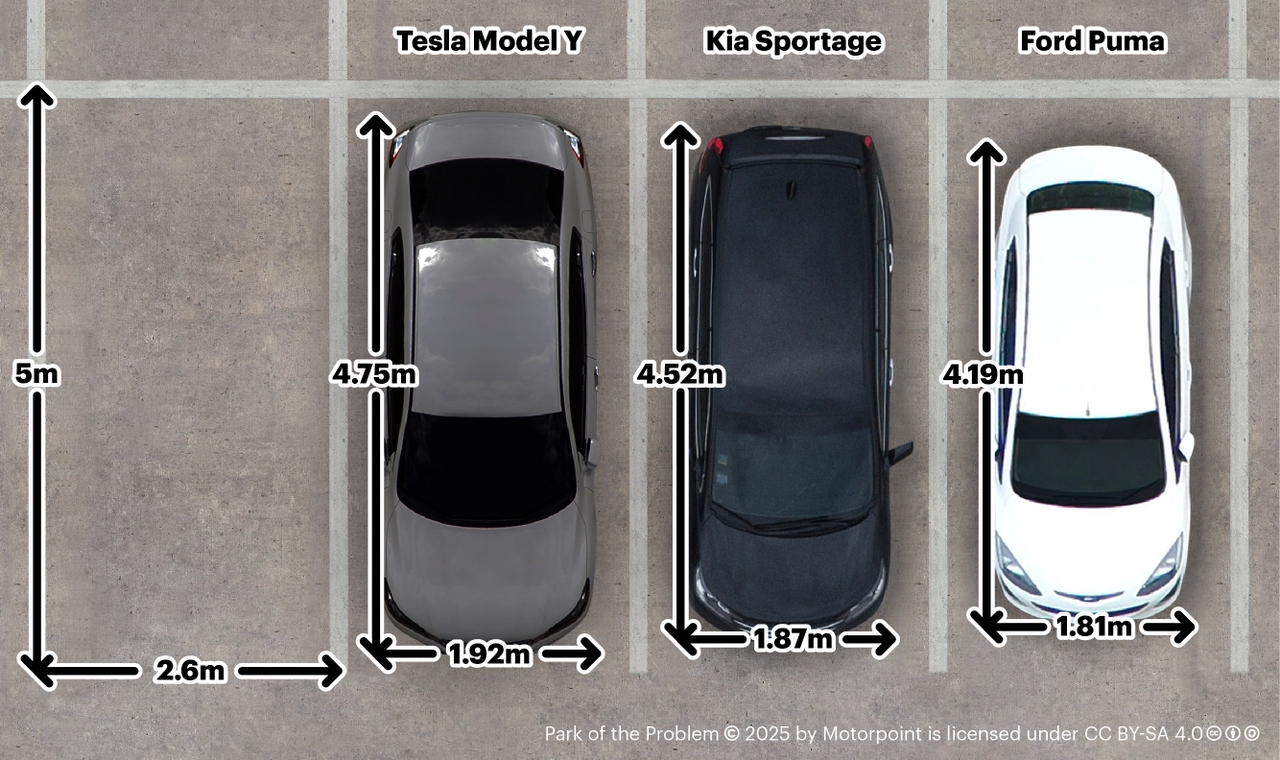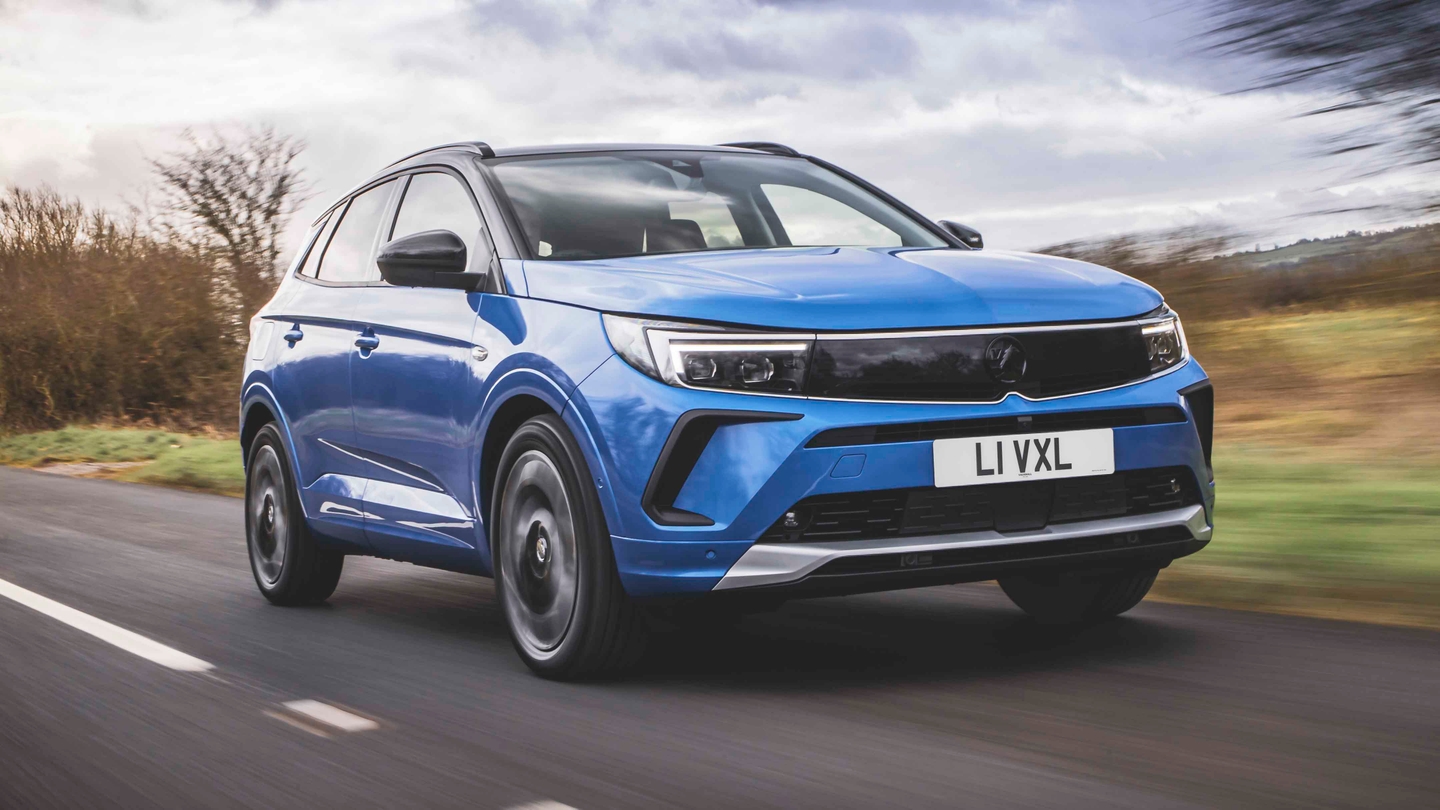With over a third of motorists (35%) believing that car parking spaces are getting smaller, we wanted to find out if this was really the case and what else could be impacting our ability to park.
We’ve crunched the numbers to understand just how well modern cars can fit in an average parking space and surveyed 2,000 UK motorists to get their thoughts on a range of parking-related issues.
How do motorists feel about parking?
It’s fair to say that parking can be a headache for drivers.
When it came to attitudes towards parking, we found that over a third of motorists (36%) think it’s stressful, with the same number admitting that it could be challenging to park their car.
A fifth of drivers we surveyed (19%) felt that they had to ‘squeeze’ their cars into parking spaces, with almost a quarter (23%) opting to park further away from their destination if it meant not needing to park between two occupied parking spaces.
The lack of space can be such an issue that 22% of respondents said there had been instances where they’d been unable to successfully park in a car park due to the spaces being too tight.
So, what’s really going on?
Are parking spaces getting smaller?
The short answer is no.
While it might feel like parking spaces are shrinking, the requirements for UK parking bays have remained the same since 1976 – with a standard bay measuring 2.4 meters wide and 4.8 meters long.
Despite these measurements having remained the same for almost five decades, nearly half of motorists (45%) think that car parking spaces are now too small for modern cars – with three-fifths (60%) saying they are too narrow and over a third (35%) finding them too short.
Are we focusing on the wrong thing?
In 1976, the top-selling car in the UK was the Ford Cortina (126,238 sold), which at the time would have been considered a larger family car. Measuring 4.2m long and 1.7m wide, it would be comparable in length to a Volkswagen Golf today (although the Golf would still be wider). *
While the Volkswagen Golf was the sixth best-selling car of 2024 (32,370), the top five spots were taken up by bigger models, including the Kia Sportage and Tesla Model Y.
On average, the top-selling cars of 2024 were 6% larger than the Volkswagen Golf – suggesting many of us now favour larger cars that are more suited to modern family life.
How much bigger are cars today?
With a quarter of motorists (24%) confident that their current car is bigger than their previous vehicle, we wanted to understand if bigger cars were to blame for the parking crisis we’re experiencing.
To do this, we took the 10 top-selling cars from 1976 and 2024 and looked at their measurements to get a clearer idea of how much space popular cars took up in a parking space:
| Year | Average Length (m) | Average Width (m) | % of space taken up ** |
| 1976 | 4.01 (83.2%) | 1.62 (67.3%) | 56.2% |
| 2024 | 4.4 (91.8%) | 1.84 (76.8%) | 70.6% |
Our research revealed that the average car in 2025 is a whopping 25% larger than it would have been in 1976 when parking space dimensions were last reviewed. Knowing this, it’s unsurprising that motorists are finding it increasingly challenging to park.

Image: Motorpoint
It’s worth noting that a big reason that cars have got larger is that they have become much safer and that the crash safety benefits of modern cars are well worth their increased size.
While bigger cars are undoubtedly safer, it’s clear that parking spaces haven’t kept pace with the rate at which cars are expanding.
Does this have any influence on car buying habits?
As the car buyer’s champion, we wanted to know if the prospect of tight parking spaces impacted motorists’ decision making when looking for their next car.
According to our research, a fifth of those surveyed (21%) said they consider how easy a vehicle would be to park when buying a car – suggesting that it could be an influential factor for many motorists.
How do bigger cars impact drivers’ ability to park?
With car owners struggling to manoeuvre their cars into tight parking spaces, we found that 2.8 million drivers have had to abandon parking in a car park because their car wouldn’t fit ***
Over a third of motorists (36%) admitted that they found parking challenging, with larger cars cited as a major problem:
- 30% felt the number of drivers in large cars made parking harder
- 33% found larger cars made it more difficult to get in and out of parking spaces
- 24% think larger cars make it more difficult to manoeuvre around car parks
According to our research, almost half of respondents (49%) agreed that modern cars were getting bigger – with 30% feeling that they are too big.
Does this lead to any bad parking habits?
While we know the average car now takes up 77% of the width of a parking bay, our research found that selfish parking habits could be exacerbating the issue motorists have parking their vehicles.
Most motorists (70%) didn’t think they had any responsibility to make sure that those parked in neighbouring bays could get in and out of their cars easily.
Considering a fifth of car owners (21%) have returned to their car and noticed it's been damaged by another driver when trying to open their door, we were surprised that so many motorists didn’t think to consider how other motorists would be able to exit or enter their vehicle.
With 39% of drivers having struggled to get out of their car once parked due to the proximity of neighbouring vehicles, a little more consideration from all involved could help in the short term.
So, what’s the solution?
In the short term, one-in-10 motorists believe that those smaller cars should benefit from priority parking to discourage the use of larger vehicles. While a sixth (16%) think that there should be larger parking spaces reserved for motorists with bigger cars.

Current parking space dimensions leave motorists with very little space to manoeuvre - Image: Motorpoint
However, with cars likely to continue getting larger, a quarter of car owners (25%) believe that current car parks are no longer fit for purpose and should be redesigned to make it easier to park.
But what could that look like?
Back in 2022, the British Parking Association (BPA) updated their guidance and recommended that the size of parking bays be increased to account for the fact that modern cars are getting bigger.
The guidance (which was specifically for multi-story and underground car parks) recommended that the length of a standard parking bay increase from 4.8m to 5.0m and the width be increased from 2.4m to 2.6m.
If these recommendations were adopted, new parking spaces would be 12.8% larger, making it easier for motorists to navigate in and out of spaces and reducing congestion in car parks.

Larger bays would make it easier for motorists to park - Image: Motorpoint
However, even if parking spaces were updated to reflect the BPA’s recommendations, motorists would still have 14% less space on average to manoeuvre into parking spaces than motorists had back in 1976 when the dimensions were last reviewed:
| Bay Dimensions (m) | Average Vehicle Area **** | % of space taken up ** | |
| 1976 – Current Bays | 4.8m x 2.4m | 6.5m | 56.2% |
| 2025 – Current Bays | 4.8m x 2.4m | 7.13 m | 70.6% |
| 2025 – Larger Bays | 5m x 2.6m | 7.13m | 62.5% |
Methodology
Survey conducted by SurveyGoo on behalf of Motorpoint with a sample of 2,000 UK car owners in March 2025. All statistics and findings have been rounded to the nearest whole number. A full data set is available on request.
We sourced the measurements of the top-selling cars of both 1976 and 2024 (according to SMMT) to calculate the averages / percentage growth used within this blog. This full piece of research (including sources) is available on request.
* Sales data according to SMMT - directly for 2024 and from AR Online for 1976
** Average length x average width was used to calculate a car's area. This was then divided by the area of a standard UK parking space to work out the % of a parking space a car fills.
*** Prediction based on the number of licensed cars in the UK (33,936,000) and our survey results
**** Average vehicle area is calculated as an average measurement of the top-selling vehicles of either 1976 or 2024. Dimensions exclude wing mirrors.


































